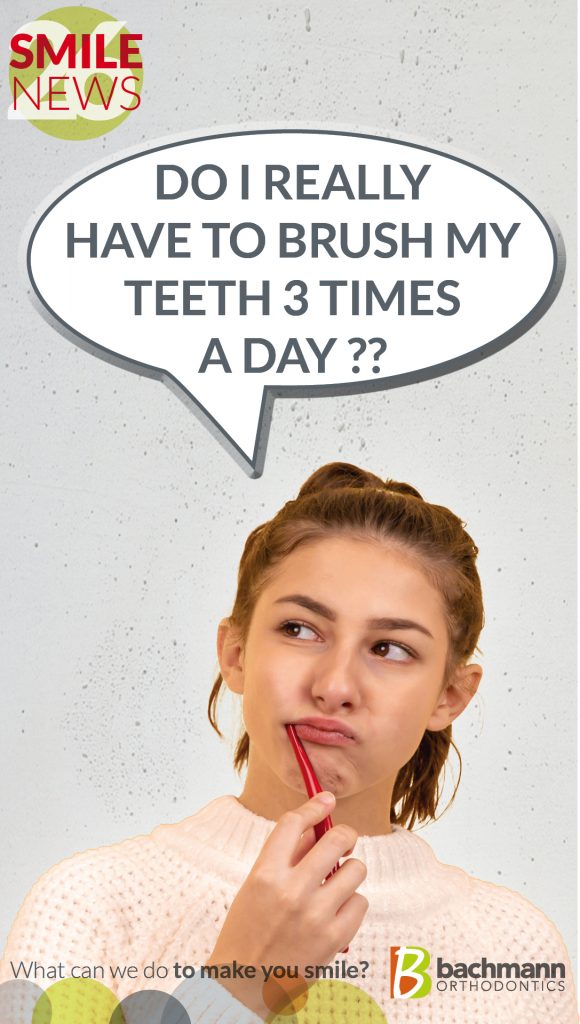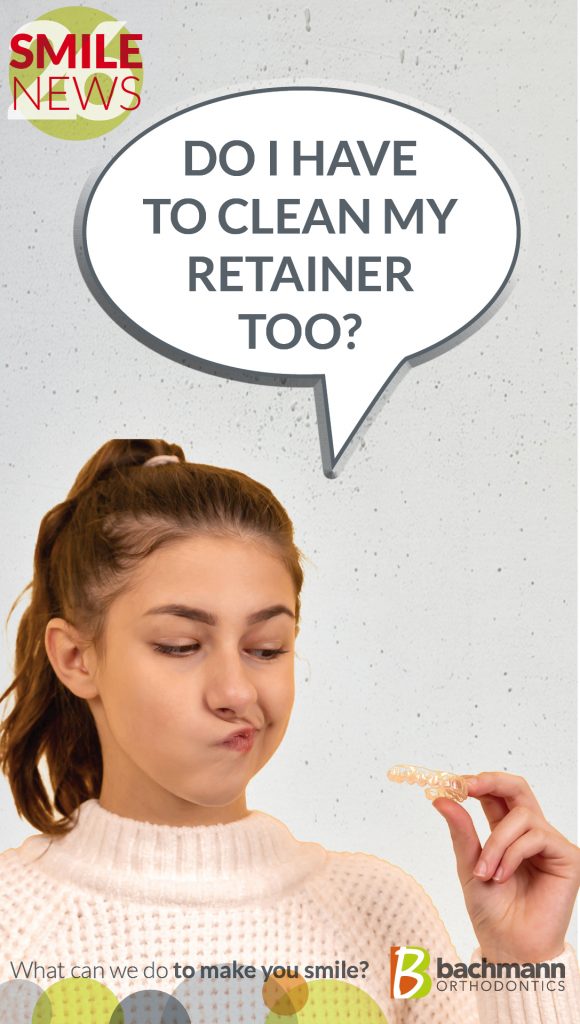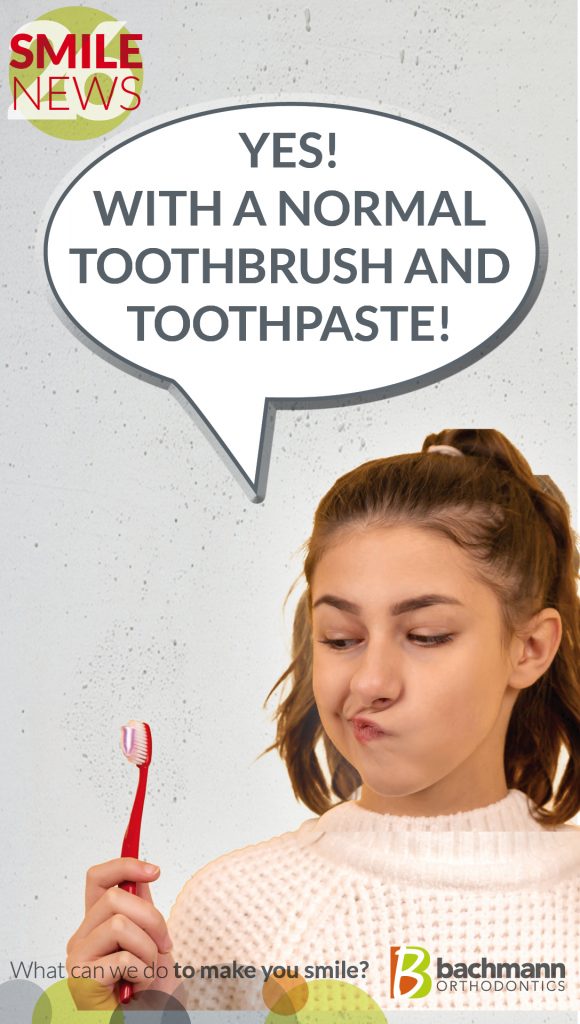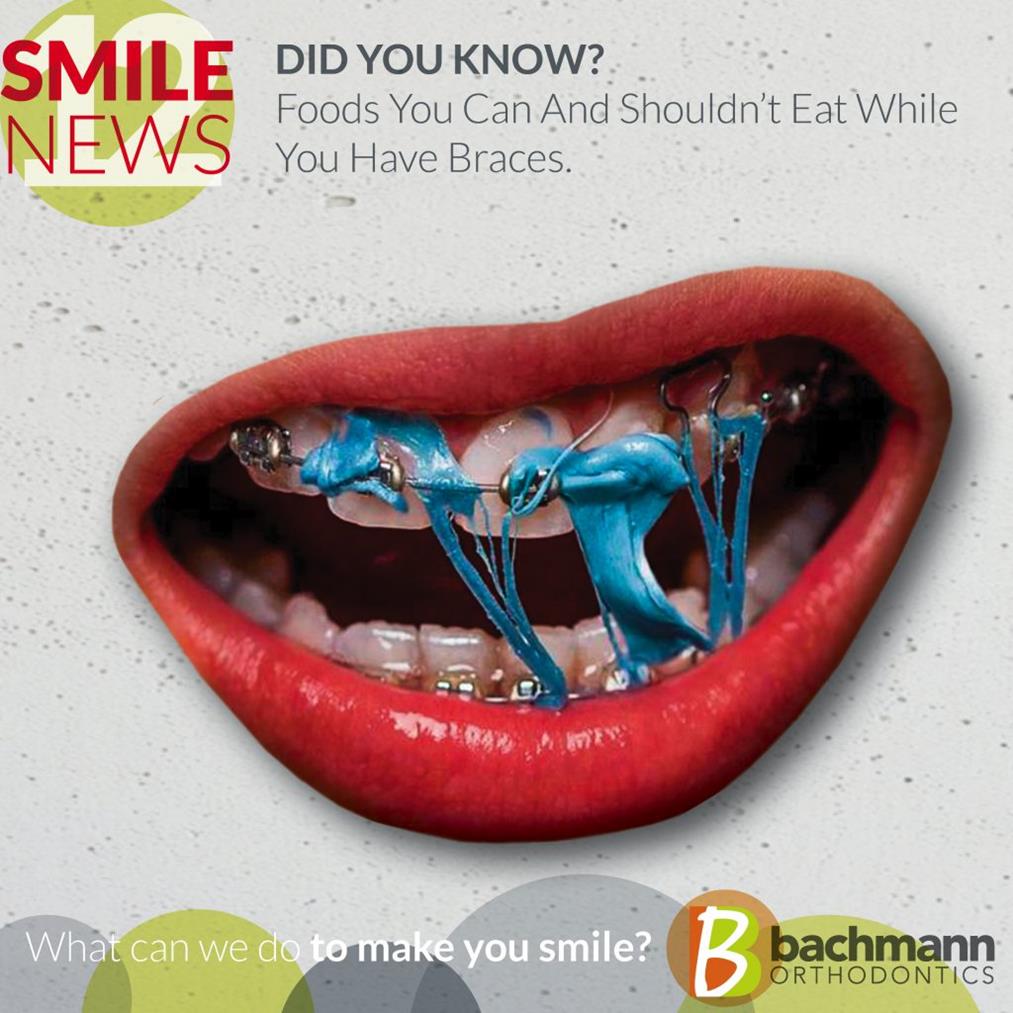
Proper Brushing



You would never consider going days without brushing your teeth. However, many retainer wearers go for long periods without cleaning these devices.
The same bacteria that build up on teeth can grow on a retainer. As a result, putting an unclean retainer in your mouth is like applying a bacteria and plaque-laden solution to the teeth and gums.

How to clean your retainer?
When brushing teeth, people should brush their retainer as well.
It is best to use a soft-bristled toothbrush and non-whitening toothpaste. Afterwards, remove the retainer and rinse it thoroughly. People should brush their teeth again after removing the retainer to clean any areas covered by it.

What can we do to make you smile?
Enquire about braces > Book a consultation today


Getting braces doesn’t hurt, but your mouth may be sensitive in the days following your appointment. Therefore, eating foods that have a tougher texture could cause pain.
Since you’ll also have to learn how to chew differently, your orthodontist will likely recommend only eating soft foods for the first few days.
Ideal foods to eat after getting braces include:
Basically, anything that’s easy to chew.
Be mindful that braces are sensitive to damage, so you’ll need to avoid certain foods for as long as you have braces.
These include sticky and hard foods that can damage the wires or bands or cause a bracket to separate from a tooth.
Foods to completely avoid with braces include:
Also, limit consumption of sugary foods and drinks while having braces. When sugar mixes with saliva, it creates a sticky film (plaque) that coats the teeth.
Brushing can remove plaque, but that becomes harder to do with braces. And if you’re unable to remove this sticky film, there’s a risk of tooth decay.
Please, please, please,
(we can not say it often enough)
Brush Your Teeth.
It is important to brush your teeth to prevent gum disease. Refusal to brush one’s teeth for several days can lead to the onset of gum disease. Brushing ensures the removal of plaque, which is the primary cause for tooth decay and gum disease; it also arrests the build-up of any plaque formation.

Dentists say that the minimum time you should spend brushing your teeth is 3 minutes twice a day. Here are some tips on how to brush properly:

.
Please, please, please, brush Your Teeth.
What can we do to make you smile?